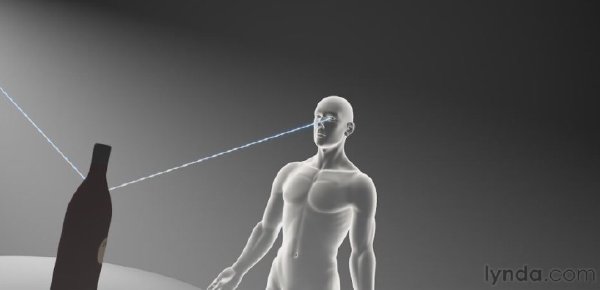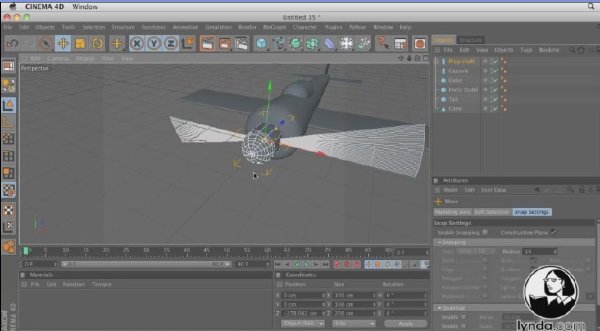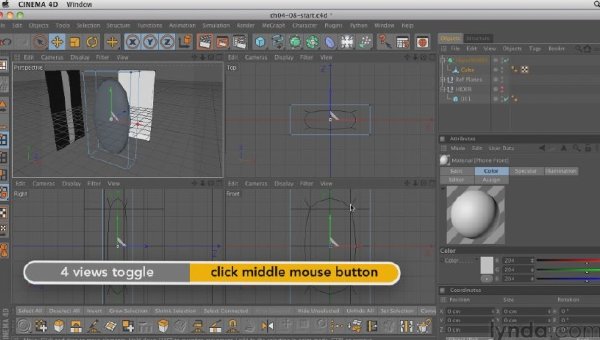| 《CINEMA 4D R12 基礎培訓教程》(Lynda.com CINEMA 4D R12 Essential Training)[光盤鏡像] | |
|---|---|
| 下載分級 | 其他资源 |
| 資源類別 | 電腦基礎 |
| 發布時間 | 2017/7/13 |
| 大 小 | - |
《CINEMA 4D R12 基礎培訓教程》(Lynda.com CINEMA 4D R12 Essential Training)[光盤鏡像] 簡介: 中文名 : CINEMA 4D R12 基礎培訓教程 英文名 : Lynda.com CINEMA 4D R12 Essential Training 資源格式 : 光盤鏡像 發行日期 : 2010年 地區 : 美國 對白語言 : 英語 文字語言 : 英文 簡介 : 資源簡介: Lynda.com 出品的時長達10小時的 CINEMA 4D R12基礎培訓 視頻教程。由
電驢資源下載/磁力鏈接資源下載:
- 下載位址: [www.ed2k.online][CINEMA.4D.R12.基礎培訓教程].[CINEMA.4D.R12.Essential.Training].Lynda.com.CINEMA.4D.R12.Essential.Training-QUASAR.iso
- 下載位址: [www.ed2k.online][CINEMA.4D.R12.基礎培訓教程].[CINEMA.4D.R12.Essential.Training].Lynda.com.CINEMA.4D.R12.Essential.Training-QUASAR.nfo
全選
"《CINEMA 4D R12 基礎培訓教程》(Lynda.com CINEMA 4D R12 Essential Training)[光盤鏡像]"介紹
中文名: CINEMA 4D R12 基礎培訓教程
英文名: Lynda.com CINEMA 4D R12 Essential Training
資源格式: 光盤鏡像
發行日期: 2010年
地區: 美國
對白語言: 英語
文字語言: 英文
簡介:

資源簡介:
Lynda.com 出品的時長達10小時的 CINEMA 4D R12基礎培訓 視頻教程。由Rob Garrott介紹了CINEMA 4D的工作流程,使其作為一種工具如Adobe After Effects, Photoshop和Illustrator的重要組成部分。本教程講解了關鍵的基礎概念(如多邊形,紋理和光線),至關重要的理解怎樣正確掌握這個3D 應用程序的功能。還包括創建,選擇和變換對象的實用技術,並對樣條曲線和多邊形建模,以及添加材質,光源和相機視圖的3D圖像有一個充分認識。本教程附帶練習文件。
簡介翻譯摘自 xuehui@TLF
以下內容摘自官網介紹:
CINEMA 4D R12 Essential Training with Rob Garrott introduces artists to the CINEMA 4D workflow, using CINEMA 4D as an important part of a toolset that includes Adobe After Effects, Photoshop, and Illustrator. The course explains the key foundational concepts, such as polygons, textures, and rays, that are crucial to understanding exactly how this 3D application functions. It also includes practical techniques for creating, selecting, and transforming objects, working with splines, polygonal modeling, and adding materials, lighting, and camera views for a fully realized 3D image. Exercise files are included with the course.
Topics include:
* Exploring the importance of object hierarchy
* Modeling with splines
* Modeling with the Knife and Extrude tools
* Applying materials and texturing
* Creating and manipulating light sources
* Animating in the timeline with keyframes
* Controlling camera movement
* Compositing in After Effects
* Texturing with BodyPaint
* Using XPresso and MoGraph
* Creating particle systems
* Rendering and adjusting final render settings


目錄:
Introduction
Welcome 01:13
Using the exercise files 00:32
35:20 1. Getting Started
Understanding the CINEMA 4D workflow 02:36
Clarifying the differences between 2D and 3D 02:02
Understanding how 3D software works 02:56
Navigating the viewports 03:45
Navigating using a three-button mouse and keyboard shortcuts 07:54
Touring the interface 08:20
Configuring project settings 03:26
Setting application preferences 04:21
44:41 2. Creating and Understanding Objects: Hierarchical Relationships
Exploring the importance of object hierarchy 07:19
Creating, selecting, and transforming objects 09:05
Understanding object categories: Comparing active and passive objects 02:34
Comparing object types 08:16
Using the Attribute Manager to modify object attributes 04:45
Creating a basic model with primitive and null objects 12:42
43:12 3. Working with Splines
Creating and working with splines 07:38
Selecting and transforming points on a spline 04:08
Modeling with splines: Sweep NURBS 07:58
Modeling with splines: Lathe NURBS 07:58
Modeling with splines: Extrude NURBS 06:29
Extruding and organizing paths from Adobe Illustrator 09:01
01:07:34 4. Polygonal Modeling Tools
Understanding the basic components of 3D objects: Points, edges, and polygons 07:35
Modeling with the Knife tool 06:14
Modeling with the Extrude tool 06:25
Modeling with the Extrude Inner tool 04:17
Closing and connecting geometry with the Create Polygon and Bridge tools 06:38
Organic modeling: Creating a HyperNURBS object 08:18
Organic modeling: Setting up a scene and reference images 08:30
Organic modeling: Creating a simple model 09:43
Organic modeling: Adding the finishing touches 09:54
27:26 5. Using Deformers to Modify Objects
Working with deformers 05:47
Deforming objects: The Wind Deformer 05:23
Deforming Objects: The Wrap Deformer 06:46
Deforming Objects: The Spline Wrap 09:30
49:50 6. Materials and Texturing
Understanding material channels 04:23
Applying materials: Projection methods 08:15
Creating materials: Reflective surfaces / shiny surfaces 08:37
Creating materials: Rough surfaces / bumpy surfaces 07:43
Creating materials: Transparent surfaces 06:56
Using alpha channels to create a label 06:11
Using selection tags to apply materials to part of an object 02:49
Texturing type using multiple materials 04:56
32:02 7. Lights
Understanding how lights work in the 3D world 06:24
Adjusting falloff to limit how light affects objects 03:32
Understanding light types 07:03
Creating and manipulating shadows 05:31
Creating light rays with visible light 03:42
Creating a simple three-point light setup 05:50
40:00 8. Keyframes and Animation
Understanding keyframe animation 08:45
Animating in the Timeline 04:24
Controlling what happens in between keyframes using the F-Curve Manager 11:25
Copying keyframes to create an animated pause 05:30
F-curve exercise: Bouncing a ball down stairs 09:56
28:45 9. Camera Movement and Control
Understanding the differences between the Editor Camera and a camera object 05:05
Exploring field of view and aspect ratio 03:17
Explaining parallax in camera movement 02:09
Creating a dynamic camera movement 09:27
Refining and previewing a camera movement 08:47
30:15 10. Rendering
Understanding the render engine 02:02
Exploring render settings 08:25
Rendering: Still images vs. animation 07:35
Setting up multi-pass rendering for still images 08:37
Batch-rendering multiple files 03:36
36:30 11. 3D Animation Workflow: Compositing in After Effects
Understanding the 3D animation workflow 04:21
Using the Compositing tag 05:18
Using the External Compositing tag 03:33
Setting up a multi-pass render 08:58
Importing elements into After Effects 04:46
Manipulating 3D renders in After Effects 06:46
Fine-tuning a composition in After Effects 02:48
38:37 12. A Very Quick Introduction to MoGraph
Explaining MoGraph 03:14
Using the Cloner object 07:15
Modifying cloners with Effector objects 07:34
Creating animation with the Fracture object 05:24
Creating abstract shapes with the MoSpline object 06:47
Using the Tracer object to create paths 03:48
Creating realistic movement with MoDynamics 04:35
26:27 13. Texturing with BodyPaint
Understanding BodyPaint 04:48
Using the Paint Setup Wizard 05:31
Understanding material channels 03:56
Painting on a texture with brushes 06:18
Creating layers with projection painting 05:54
37:23 14. Dynamics
Understanding the dynamics engine 02:35
Exploring the difference between soft bodies and rigid bodies 06:36
Using connectors to create relationships between objects 08:19
Creating movement with motors 08:48
Creating bouncing motion with springs 05:32
Attracting objects with forces 05:33
31:52 15. XPresso
Introducing XPresso 05:13
Creating a data slider to control XPresso data 07:11
Controlling parameters with the Range Mapper node 10:13
Controlling multiple lights with a single slider 09:15
28:21 16. Particles
Explaining basic particles and thinking particles 04:07
Creating particles with the Emitter object 07:40
Controlling particles with basic forces 06:24
Creating a liquid effect using Particles and Metaballs 10:10
01:06 17. Conclusion
Next steps 01:06
英文名: Lynda.com CINEMA 4D R12 Essential Training
資源格式: 光盤鏡像
發行日期: 2010年
地區: 美國
對白語言: 英語
文字語言: 英文
簡介:

資源簡介:
Lynda.com 出品的時長達10小時的 CINEMA 4D R12基礎培訓 視頻教程。由Rob Garrott介紹了CINEMA 4D的工作流程,使其作為一種工具如Adobe After Effects, Photoshop和Illustrator的重要組成部分。本教程講解了關鍵的基礎概念(如多邊形,紋理和光線),至關重要的理解怎樣正確掌握這個3D 應用程序的功能。還包括創建,選擇和變換對象的實用技術,並對樣條曲線和多邊形建模,以及添加材質,光源和相機視圖的3D圖像有一個充分認識。本教程附帶練習文件。
簡介翻譯摘自 xuehui@TLF
以下內容摘自官網介紹:
CINEMA 4D R12 Essential Training with Rob Garrott introduces artists to the CINEMA 4D workflow, using CINEMA 4D as an important part of a toolset that includes Adobe After Effects, Photoshop, and Illustrator. The course explains the key foundational concepts, such as polygons, textures, and rays, that are crucial to understanding exactly how this 3D application functions. It also includes practical techniques for creating, selecting, and transforming objects, working with splines, polygonal modeling, and adding materials, lighting, and camera views for a fully realized 3D image. Exercise files are included with the course.
Topics include:
* Exploring the importance of object hierarchy
* Modeling with splines
* Modeling with the Knife and Extrude tools
* Applying materials and texturing
* Creating and manipulating light sources
* Animating in the timeline with keyframes
* Controlling camera movement
* Compositing in After Effects
* Texturing with BodyPaint
* Using XPresso and MoGraph
* Creating particle systems
* Rendering and adjusting final render settings


目錄:
Introduction
Welcome 01:13
Using the exercise files 00:32
35:20 1. Getting Started
Understanding the CINEMA 4D workflow 02:36
Clarifying the differences between 2D and 3D 02:02
Understanding how 3D software works 02:56
Navigating the viewports 03:45
Navigating using a three-button mouse and keyboard shortcuts 07:54
Touring the interface 08:20
Configuring project settings 03:26
Setting application preferences 04:21
44:41 2. Creating and Understanding Objects: Hierarchical Relationships
Exploring the importance of object hierarchy 07:19
Creating, selecting, and transforming objects 09:05
Understanding object categories: Comparing active and passive objects 02:34
Comparing object types 08:16
Using the Attribute Manager to modify object attributes 04:45
Creating a basic model with primitive and null objects 12:42
43:12 3. Working with Splines
Creating and working with splines 07:38
Selecting and transforming points on a spline 04:08
Modeling with splines: Sweep NURBS 07:58
Modeling with splines: Lathe NURBS 07:58
Modeling with splines: Extrude NURBS 06:29
Extruding and organizing paths from Adobe Illustrator 09:01
01:07:34 4. Polygonal Modeling Tools
Understanding the basic components of 3D objects: Points, edges, and polygons 07:35
Modeling with the Knife tool 06:14
Modeling with the Extrude tool 06:25
Modeling with the Extrude Inner tool 04:17
Closing and connecting geometry with the Create Polygon and Bridge tools 06:38
Organic modeling: Creating a HyperNURBS object 08:18
Organic modeling: Setting up a scene and reference images 08:30
Organic modeling: Creating a simple model 09:43
Organic modeling: Adding the finishing touches 09:54
27:26 5. Using Deformers to Modify Objects
Working with deformers 05:47
Deforming objects: The Wind Deformer 05:23
Deforming Objects: The Wrap Deformer 06:46
Deforming Objects: The Spline Wrap 09:30
49:50 6. Materials and Texturing
Understanding material channels 04:23
Applying materials: Projection methods 08:15
Creating materials: Reflective surfaces / shiny surfaces 08:37
Creating materials: Rough surfaces / bumpy surfaces 07:43
Creating materials: Transparent surfaces 06:56
Using alpha channels to create a label 06:11
Using selection tags to apply materials to part of an object 02:49
Texturing type using multiple materials 04:56
32:02 7. Lights
Understanding how lights work in the 3D world 06:24
Adjusting falloff to limit how light affects objects 03:32
Understanding light types 07:03
Creating and manipulating shadows 05:31
Creating light rays with visible light 03:42
Creating a simple three-point light setup 05:50
40:00 8. Keyframes and Animation
Understanding keyframe animation 08:45
Animating in the Timeline 04:24
Controlling what happens in between keyframes using the F-Curve Manager 11:25
Copying keyframes to create an animated pause 05:30
F-curve exercise: Bouncing a ball down stairs 09:56
28:45 9. Camera Movement and Control
Understanding the differences between the Editor Camera and a camera object 05:05
Exploring field of view and aspect ratio 03:17
Explaining parallax in camera movement 02:09
Creating a dynamic camera movement 09:27
Refining and previewing a camera movement 08:47
30:15 10. Rendering
Understanding the render engine 02:02
Exploring render settings 08:25
Rendering: Still images vs. animation 07:35
Setting up multi-pass rendering for still images 08:37
Batch-rendering multiple files 03:36
36:30 11. 3D Animation Workflow: Compositing in After Effects
Understanding the 3D animation workflow 04:21
Using the Compositing tag 05:18
Using the External Compositing tag 03:33
Setting up a multi-pass render 08:58
Importing elements into After Effects 04:46
Manipulating 3D renders in After Effects 06:46
Fine-tuning a composition in After Effects 02:48
38:37 12. A Very Quick Introduction to MoGraph
Explaining MoGraph 03:14
Using the Cloner object 07:15
Modifying cloners with Effector objects 07:34
Creating animation with the Fracture object 05:24
Creating abstract shapes with the MoSpline object 06:47
Using the Tracer object to create paths 03:48
Creating realistic movement with MoDynamics 04:35
26:27 13. Texturing with BodyPaint
Understanding BodyPaint 04:48
Using the Paint Setup Wizard 05:31
Understanding material channels 03:56
Painting on a texture with brushes 06:18
Creating layers with projection painting 05:54
37:23 14. Dynamics
Understanding the dynamics engine 02:35
Exploring the difference between soft bodies and rigid bodies 06:36
Using connectors to create relationships between objects 08:19
Creating movement with motors 08:48
Creating bouncing motion with springs 05:32
Attracting objects with forces 05:33
31:52 15. XPresso
Introducing XPresso 05:13
Creating a data slider to control XPresso data 07:11
Controlling parameters with the Range Mapper node 10:13
Controlling multiple lights with a single slider 09:15
28:21 16. Particles
Explaining basic particles and thinking particles 04:07
Creating particles with the Emitter object 07:40
Controlling particles with basic forces 06:24
Creating a liquid effect using Particles and Metaballs 10:10
01:06 17. Conclusion
Next steps 01:06
資源來自網絡收集 未經過一一的質量 安全等檢測
只是把收集的資源和各位驢友分享 僅作網絡學習交流使用 請勿用於商業用途 !
希望各位下載的驢友能多多參與分流保源
[公告]公開招募VeryCD U 開放課程整理、發布人員報名 點此進入
VeryCD教育區發布、交流官方QQ群:127798268 歡迎大家加入
希望更多的網友加入到國外名校開放課程整理、發布的隊伍中來. :
- 上一頁:《FumeFx 基礎教學》3ds Max FumeFx [flv]
- 下一頁:《項目和產品管理視頻教程》(Lynda.com Pitching Projects and Products to Executives)[光盤鏡像]
相關資源:
- [其他資源綜合]《失戀巧克力職人》 資料下載
- [電腦基礎]《次世代角色建模技法》(Digital Tutors - Modeling Next-Gen Characters in Maya)[Bin]
- [電腦基礎]《Java網絡高級編程》[PDF]
- [電腦基礎]系統安裝與重裝[PDF ]
- [電腦基礎]《 Premiere Pro CS5 基礎教程》( Premiere Pro CS5 Essentials )[光盤鏡像]
- [其他資源綜合]《圖片素材》(PhotoDisc 006 - Nature, Wildlife and Environment)
- [其他資源綜合]《骨法秘傳:搏擊術的極意》掃描版[PDF] 資料下載
- [電腦基礎]計算機文官二級復習教程
- [其他資源綜合]老男孩python 第七期培訓視頻
- [電腦基礎]《Bento 2基礎教程》(Lynda.com Bento 2 Essential Training)[光盤鏡像]
- [教育科技]《中西醫結合生理學》掃描版[PDF]
- [生活圖書]《性保健藥膳》掃描版[PDF]
- [小說圖書]立足當地資源 發展農民專業合作社
- [軟件綜合]《科技數學計算》(Wolfram Research Mathematica)v9.0.0.0[壓縮包]
- [文學圖書]《東南亞與中國西南少數民族建築文化探析》掃描版[PDF]
- [硬盤游戲]《保護橙子2》完整硬盤版[安裝包]
- [光盤游戲]《無雙大蛇》(Musou Orochi)官方繁體中文破解版[光盤鏡像]
- [生活圖書]《寵物服裝DIY》掃描版[PDF]
- [少兒圖書]《數學108》掃描版[PDF]
- [硬盤游戲]文明5【已整合1.0.3.279升級檔+全DLC】
- 《Keystone CSharp視頻教程》(KeyStone Programing with Microsoft C#)[Bin]
- 《電腦硬件組裝完全DIY手冊》(2005全新版)視頻教程[Bin]
- 《舉一反三:CorelDRAW X3中文版平面設計實戰訓》(CorelDRAW X3)隨書光盤[壓縮包]
- 《開發者的JavaScript學習密鑰》(Learnkey JavaScript for Developers)5CD壓縮包與5CD
- 《新火星人-After Effects 5.5 影視合成風暴 3CD》[ISO]
- 《XSI半條命II建模教程》(XSI - Half-Life 2 - Character Modeling)2006(CG教程)
- 《CAD教育網周四新的ProE Wildfire2.0工業設計從基礎到實踐》(ProENGINEER Wildfire Design ebook)CAD教育網注冊版
- 《MAYA銀版教程》(AUTODESK MAYA SILVER TUTORIALS)SWF格式
- 微型計算機》2014年5月上(你的網絡設備安全嗎?
- 《使用Illustrator CS5設計兩種顏色的T恤視頻教程》(Digital Tutors Designing a Two Color T-Shirt in Illustrator CS5)[光盤鏡像]
- 《CNN互動英語08年1月號》(LiveABC CNN Interactive English 2008.01 No.088)[ISO]
- 《PS照片精修飾技巧》(Gnomon Photographic Retouching in Adobe Photoshop )[ISO]
免責聲明:本網站內容收集於互聯網,本站不承擔任何由於內容的合法性及健康性所引起的爭議和法律責任。如果侵犯了你的權益,請通知我們,我們會及時刪除相關內容,謝謝合作! 聯系信箱:[email protected]
Copyright © 電驢下載基地 All Rights Reserved



